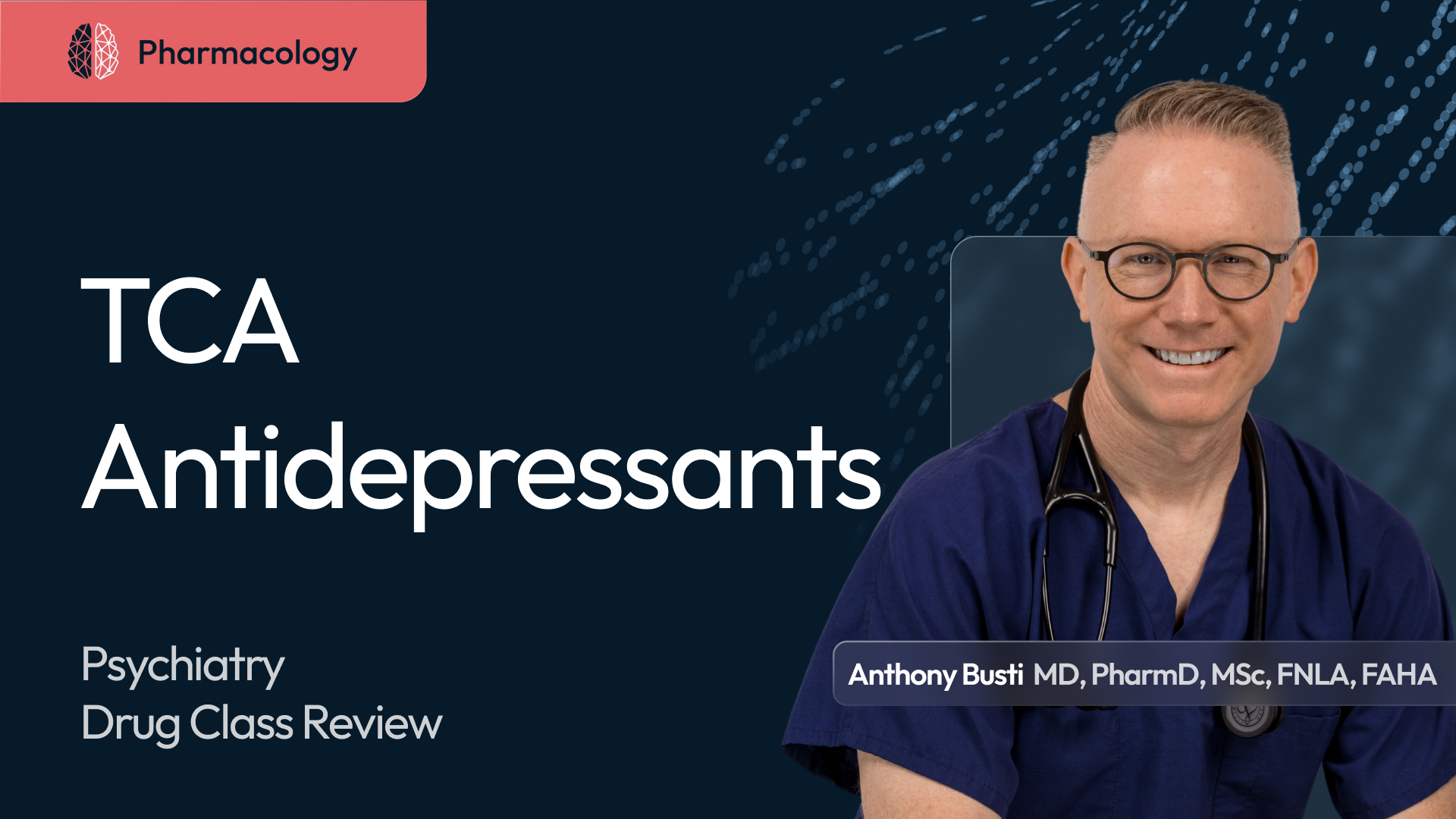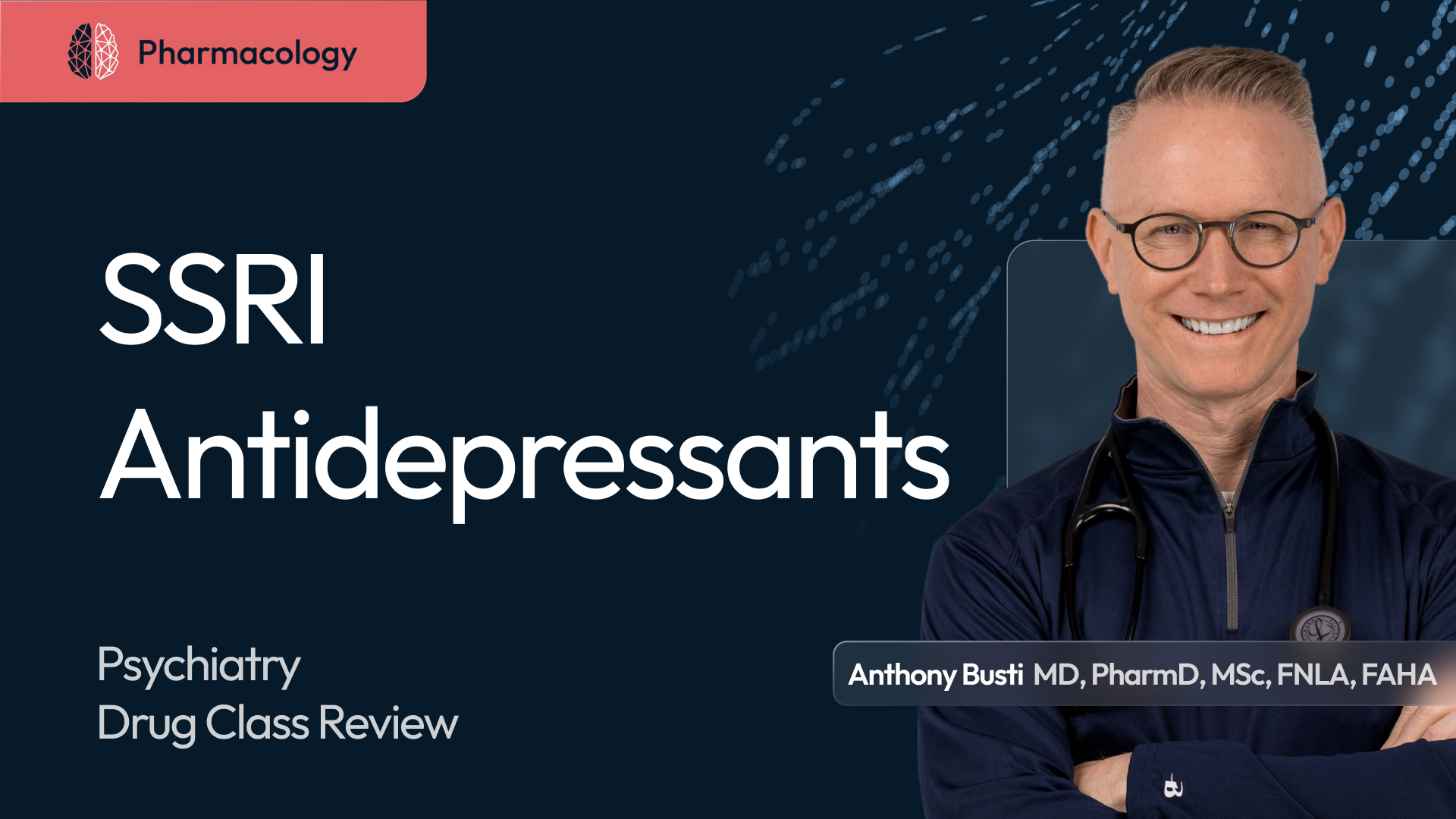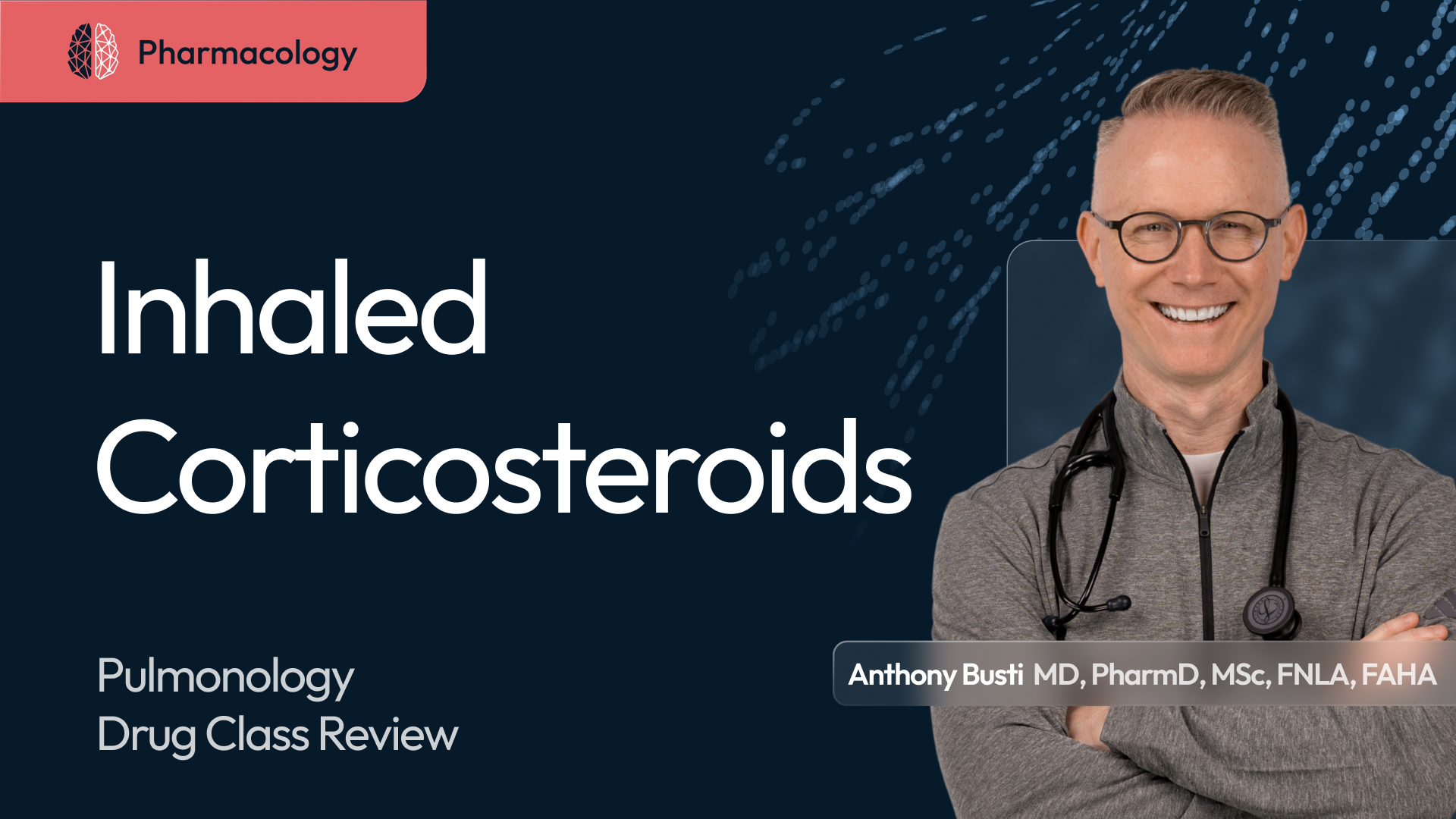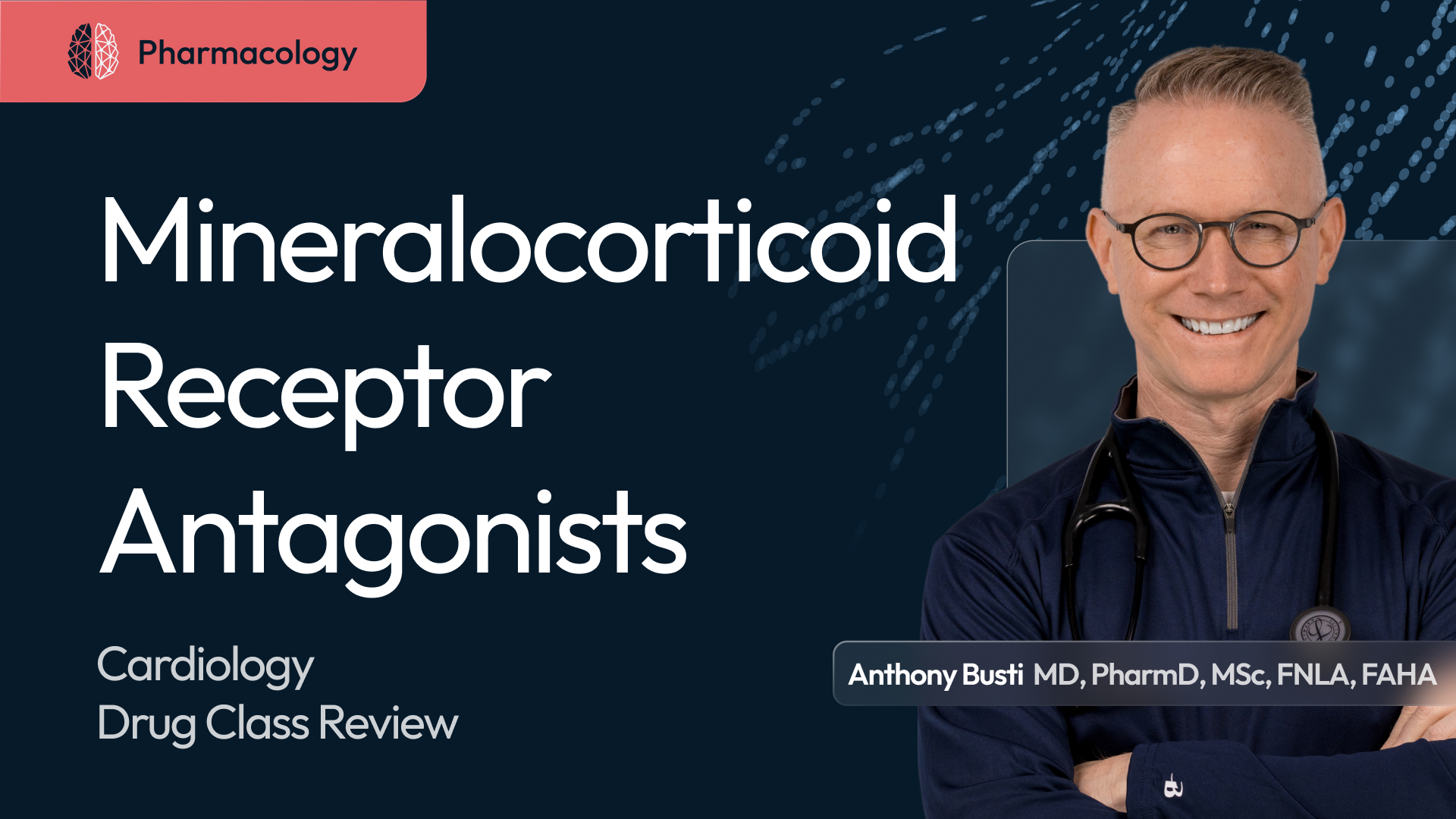Atypical Antidepressants: Pharmacology Made Easy & Clinically Relevant
Atypical antidepressants offer unique pharmacologic profiles that give them advantages over other classes of antidepressants, including even smoking cessation & insomnia. Learning the why helps us master the how in using these medications.

In this This Is Why with Dr. Busti pharmacology review, Dr. Busti explores the atypical antidepressants—a diverse group of agents that work beyond traditional SSRI and SNRI mechanisms. This class includes bupropion, mirtazapine, trazodone, vilazodone, and vortioxetine, each offering unique neurotransmitter targets, side effect profiles, and clinical roles.
Learn why these agents are valuable not only for major depressive disorder but also as adjuncts to SSRI therapy, when managing patients with overlapping anxiety, sleep, appetite, or sexual side effect considerations. Dr. Busti walks through how each drug modulates neurotransmission in the central nervous system, the key pharmacokinetic and pharmacodynamic principles behind their activity, and how to use their differences to tailor treatment effectively.
This episode also covers metabolic pathways (CYP2D6, CYP3A4, CYP2C19), genetic polymorphisms, clinical contraindications, and side effect management—connecting the why behind drug selection to the how of real-world patient care.
Disclaimer: This content is for educational purposes only and is not intended to provide medical advice, diagnosis, or treatment. Always seek the advice of your physician or other qualified health provider with any questions you may have regarding a medical condition. Never disregard professional medical advice or delay in seeking it because of something you have heard in this content.
Chapter Table of Contents
00:00 – Introduction: Framing the role of atypical antidepressants
02:40 – Why Study This Class: Expanding beyond depression and SSRI adjunct use
05:00 – Drugs in the Class: Bupropion, mirtazapine, trazodone, vilazodone, vortioxetine
07:25 – Neurotransmitter Targets: Dopamine, norepinephrine, and serotonin modulation
10:40 – Mechanism of Action Overview: The synaptic cleft and neurotransmitter dynamics
14:55 – Comparing Mechanisms: Release vs. reuptake vs. metabolism inhibition
18:30 – Clinical Use Cases: Leveraging unique effects—sleep, appetite, energy, mood
21:10 – Pharmacokinetics: Bioavailability, CYP interactions, genetic variability
24:30 – Adverse Effects: Anticholinergic, GI, sedation, insomnia, and weight changes
28:05 – Key Warnings: Suicidality, seizure risk, and geriatric cautions
30:10 – Drug Interactions: MAOI washout, serotonin syndrome, CYP2D6 issues
32:45 – Monitoring: Mood, weight, BP, labs, and false-positive screening awareness
34:10 – Counseling & Patient Education: Setting expectations and managing side effects
35:45 – Summary & Clinical Application: Choosing and sequencing atypicals effectively
More than just access—it’s where understanding deepens.
Create a free account or log in to gain access to this content!
Dive Deeper
Bonus Video (ad free)
Downloads
Atypical Antidepressants Tables
Dive Deeper
Bonus Video
Downloads
Atypical Antidepressants Tables








